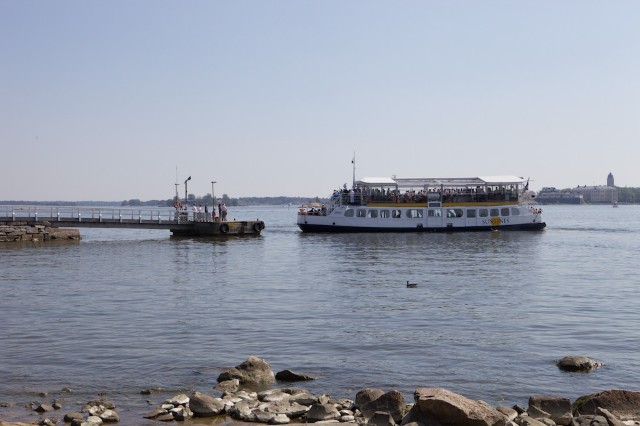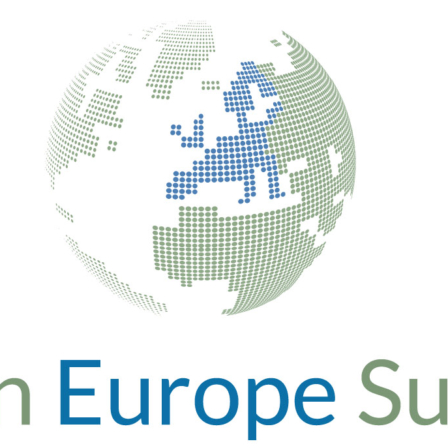For the European welfare state model to be sustainable, the way in which we manage social risks and provide well-being must be significantly renewed. If global sustainability challenges are not resolved, the whole foundation of the welfare state may break down both economically and in terms of well-being and security.
The future of the European welfare system was examined at a conference organised in Athens in the end of June, which I attended as part of the Vision Europe Summit (VES) project. VES is a new network of leading European think tanks and foundations which is currently gathering the views of its three expert groups on the future of the European welfare system. Sitra is the Finnish partner in this group of seven think tanks.
In Athens, a panel discussion was organised as part of the International Conference on Philanthropy that focused on the future of the European welfare system.
The panel moderator, Robin Niblett, director of the London-based international think tank Chatham House, introduced the topic by presenting a set of figures that represents a statistic often mentioned in the political debate on the future of the welfare state: 7-22-50. We have in Europe at the moment 7% of the world’s population and we are accounting for 22% of the world’s gross domestic product. However, Europe accounts for more than 50% of global welfare spending. Can this be sustainable? Besides myself, there were two other panellists answering the questions: Professor Iain Begg from the London School of Economics and Professor Panos Tsakloglou from Athens University of Economics and Business.
The debate on the sustainability of the welfare state usually focuses on the question of whether our welfare state model is economically sustainable. Has public spending gone through the roof? Can indebted public economies afford to keep social spending at the same level as today? And does high social spending weaken Europe’s competitiveness in global markets?
Social protection from the perspective of the whole economy
Social protection is about managing social risks related to things such as illness, unemployment or ageing. These risks exist regardless of the responses of society. They also cause inevitable costs to society. If the burden falls on the individual, it soon affects the family, the private sector and ultimately the national economy as a whole. The welfare state has been not only a European value judgement but also a response to the question: what is the most efficient way to take care of the inevitable social risks?
In the panel discussion, the question came up of whether society is currently managing this task efficiently. We also considered whether the way in which we organise the social system is sustainable.
In many European countries, the welfare state relies on a silo-based system of ministries and agencies specialised in different areas of human well-being. Most countries have separate systems for dealing with the different types of social risks, and these systems interact poorly with each other.
For example, we have separate systems for providing a minimum income to students, parents of small children, unemployed people and elderly people, although the basic need is the same. Each silo sub-optimises the efficiency of its own activities and, as a result, the whole system no longer works optimally. At the same time, individual needs tend to be disregarded in the mass-produced services provided by highly bureaucratic systems. For the European welfare state model to be sustainable, the way in which we manage social risks and provide well-being must be significantly renewed.
Princess Laurentien of the Netherlands, who spoke at the conference the previous day, encouraged us to flip the perspective from the now to the future in the notion of sustainable development. Instead of asking how we can meet the needs of the present (without compromising the ability of future generations to meet their own needs), we should first and foremost ask what we must do today in order to ensure that future generations are able to meet their own needs. Viewed from the perspective of the future welfare system, this means, above all, two things: we must invest in the future well-being of people and integrate ecological aspects into our welfare state models.
Many global sustainability challenges, such as climate change, seriously threaten the different welfare state models in Europe. If they are not resolved, the whole foundation of the welfare state may break down both economically and in terms of well-being and security. Although future ecological and well-being aspects cannot be examined as separate issues, political discussion on the future of the welfare state and the green economy, for example, have become strongly differentiated.
The European welfare system has been built on a bargain, a social contract so to speak, between the citizens and the state, in which the public sector has undertaken to provide citizens with social protection and investment in welfare in return for the political legitimacy of governing. Following the recent political debate, one cannot avoid the interpretation that the current role of the state is to drive economic growth and competitiveness, and welfare provision is an inevitable cost related to this task. “Is the current level of social protection or public welfare services affordable?” is a typical example of the political discourse reflecting this thinking.
Is an ideological shift really taking place in the relationship between the state and citizens? Or should we build European welfare states on the foundation that the state exists for people – and not vice versa?
Robin Hood or a piggy bank?
From the perspective of social sustainability, the panel emphasised the different functions of the welfare state. One is to act like Robin Hood: to reduce economic inequality by transferring money from the rich to the poor. In addition, the welfare state has a piggy bank function: it either reserves current income funds for future needs or utilises the income of younger generations so as to safeguard the living conditions of elder generations.
Many pension and social insurance systems are based on the piggy bank principle. The basis for the Robin Hood approach is often to target social protection at those in greatest need, while in the piggy bank model part of future welfare is usually financed publicly and supplemented with private contributions. In this case, those who have contributed most also receive the most.
Discussion of the future of the welfare state often focuses on finding a balance between these two functions. The panel stated that welfare states also have a third function: investing in the future, i.e. in human and social capital. This investment aspect has traditionally been stronger in the Nordic welfare state thinking than in other European countries, in which the right to child day care is still a new phenomenon, for example. In the European welfare state debate, social investment has recently been given more weight since the European Commission called on member states to prioritise social investment and to modernise their welfare states (the EU’s Social Investment Package).
The line between social protection and social investment is not always clear. For example, basic income, on which the new Finnish government has undertaken to launch an experiment, represents both of these simultaneously. As it ensures a minimum income to all citizens, it provides social protection. At the same time, it is also an investment in the future, empowering citizens. If a basic income ensures that each euro earned adds up to the income of individuals, it may help remove incentive traps relating to employment.
A basic income may also encourage every citizen to fully use their resources for activities that are productive for society instead of expending all their energy in maintaining basic functions, such as acquiring food and shelter.
Work continues towards the summit in the autumn
The results of the Vision Europe Summit collaboration will be presented at a high-level summit organised in Berlin in November. Besides Sitra, the other partners involved are Bertlesmann Stiftung, Chatham House, Bruegel, Notre Europe Jacques Delors Institute, Compagnia di San Paolo and Calouste Gulbenkian Foundation. In addition, a joint opinion poll will be carried out in all these countries in the summer of 2015 in order to ascertain what citizens think about the future of the welfare state.




Recommended